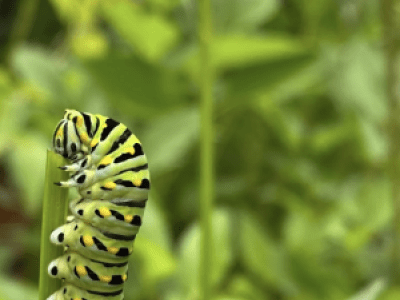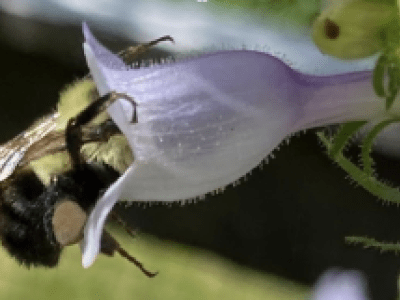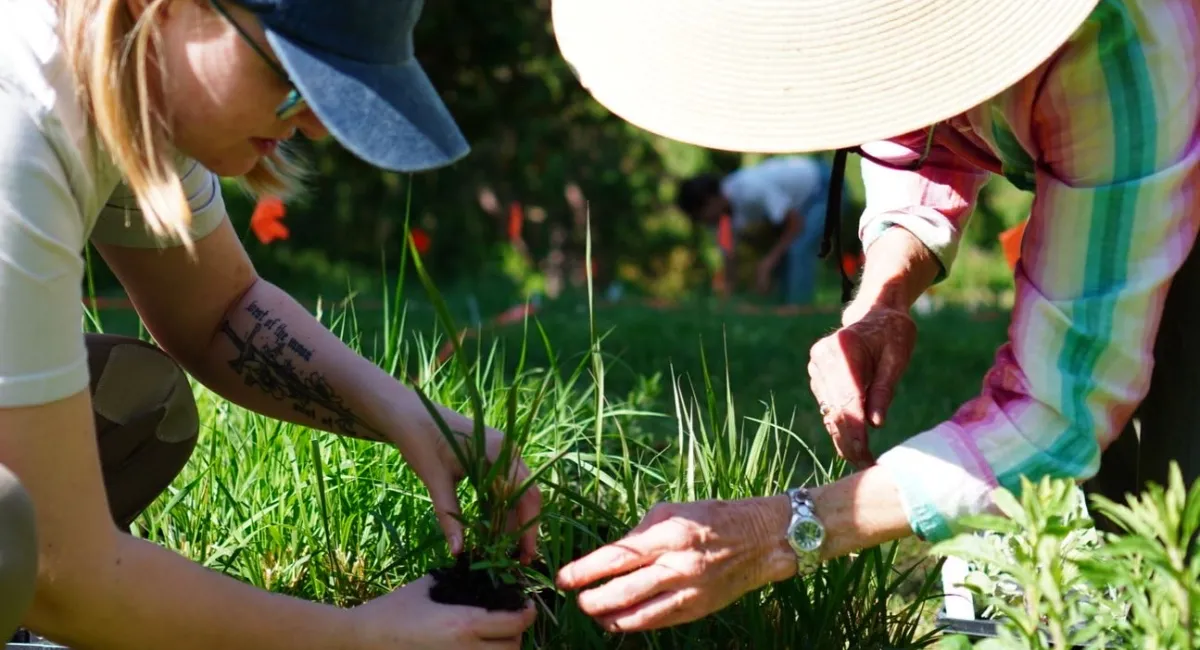Learn your site’s conditions and the resources insects seek. Note the landscape layers you and your neighbors have and what’s missing.
Plant for the site conditions
Few plants can thrive in all site conditions. The Champlain Valley is comprised of a wide variety of soils, derived from our glacial history, including:
- clay soils from the bottom of Glacial Lake Vermont;
- sandy soils from the shores of the ancient Champlain Sea;
- limestone outcrops
In addition, the amount of sunlight and water available to plants varies by location.
Many plants have multiple species which have evolved to tolerate different conditions. For example, there is a milkweed species adapted to sunny dry sand (butterfly-weed or Asclepias tuberosa), to moist areas (swamp milkweed or Asclepias incarnata) and yet another to woodland openings (poke milkweed or Asclepias exaltata)! Many powerhouse pollinator plants – goldenrods, asters, mountain mints and Joe-Pye weeds – also have species adapted to specific site conditions.
Read our "Determining Site Conditions" section before choosing plants.
Plant for the Insects
Moth and butterfly caterpillars eat leaves; bee larvae rely on pollen after hatching; and many adult bees and wasps feed on nectar as they gather food for their larvae. Most insects live as adults for only a couple of weeks -- just long enough to mate, lay their eggs on specific plants, and collect packets of food for their nest site.

Choose a variety of host plants. About 90% of moth and butterfly caterpillars are diet specialists and are restricted to eating a limited number of plant species. A well known example is the Black swallowtail butterfly, who only lays eggs on members of the carrot family, like Golden Alexander. Birds, in turn, feed protein- and fat-rich caterpillars to their young.
Provide sequentially blooming pollen AND nectar sources between April and September. Pollen is full of the protein and fat that bees need to feed their larvae. Nectar is the sugar-rich food that provides energy for the short-lived adults to be able to find a mate, lay eggs and gather enough larval food reserves. Most perennials bloom for only 2-4 weeks.

Provide different flower shapes. Bees, wasps, moths, and butterflies come in different sizes and with different tongue lengths (short, medium, and long). They need different flower shapes to successfully collect nectar and pollen, from broad flat flower clusters with short tiny flowers (e.g. golden Alexanders, asters, and goldenrods) or long tubular ones (e.g. Monardas and Penstemons).
Consider Layers
Different landscape layers provide different habitat resources.
- Top Layer: Tree Canopy. Native trees really matter! Long-lived, broad-canopy hardwood trees provide the most benefit. If adding trees, make those selections first.
- Benefits for insects and birds:
- They’re the earliest spring source of pollen and nectar for pollinators.
- A mature tree provides the greatest amount of leaves (or biomass), for its footprint on the landscape. It is estimated that one mature tree is equivalent to about 3500 sq ft of ground cover plants!
- They are host plants for the largest number of moth and butterfly caterpillar species.
- Benefits for the climate
- Long-lived, large canopied tree species (like oaks) create the longest-term carbon sequestration vs. smaller, shorter lived species (like crabapples).
- Trees provide multi-decade cooling by shading heat-absorbent pavement and roofs in increasingly warm summers.
- Benefits for insects and birds:
- Mid-Layer: Small Trees and Shrubs
- These are the important mid-spring source of pollen and nectar for pollinators
- They provide the next greatest amount of biomass for moth caterpillars, etc. for their landscape footprint.
- Groundcover Layer: Perennials and Annuals
- These provide crucial late spring through fall sources of pollen and nectar for pollinators
- They greatly increase overall plant species diversity which in turn supports a wider variety of insects. For example, milkweeds are both host plants for Monarch butterflies, milkweed tussock moths, and milkweed leaf beetles, as well as a nectar source for numerous native bees and wasps. Little bluestem grass is a host plant for several skipper butterflies. Even our forest understory ferns are host plants.
- Other Considerations
- Evaluate the vicinity: Notice what flower and host plant resources are growing nearby, where diversity can be added, and what gaps need to be filled.
- Does the area already have willows, poplar/cottonwoods, and red maples providing earliest season pollen/nectar resources? Does it already have oaks nearby that host hundreds of moths?
- What native trees, shrubs, and groundcover plants are already providing floral and foliage resources from April through September?
- Incorporate floral diversity and abundance.
- Try to have at least three species blooming at the same time throughout the growing season.
- Plant at least 10 square feet of each species in the garden when possible (in a single block or clustered like in a meadow). Bees tend to collect from a single type of plant per foraging trip so it's important to make it worth their trip.
- Aim to add at least 10 larval host plants for moths and butterflies that are native to the area.
- Pay attention to plant growth habits: clumping vs spreading. Spreading plants can require greater long term maintenance. Many of our favorite pollinator powerhouse plants have both spreading and clumping species, e.g. milkweeds, goldenrods, mountain mints, etc. Read plant descriptions carefully!
- Be wary of cultivars. Cultivars are plants bred for specific traits. Whether or not they are beneficial as habitat is a complicated matter.
- Straight species (aka “wild types”) in general have the highest ecological impact for pollinators and for the genetic diversity and resilience of the plants.
- Avoid purple-leaved cultivars. The caterpillars ordinarily hosted by these species won’t eat their foliage, likely due to the bitter purple anthocyanins.
- Avoid double flowers. They provide little to no pollen and nectar for pollinators.
- For more information see Xerces Society’ advice on using cultivars.
- Mt. Cuba Center’s research trials are useful for comparing the horticultural qualities and pollinator value of selected groups of species and their cultivars.
- Prioritize increasing plant diversity rather than focusing on whether plants are grown in Vermont or not. Native plant nurseries from New Jersey to Minnesota are important seed and plant sources for our ecoregion.
- Evaluate the vicinity: Notice what flower and host plant resources are growing nearby, where diversity can be added, and what gaps need to be filled.

